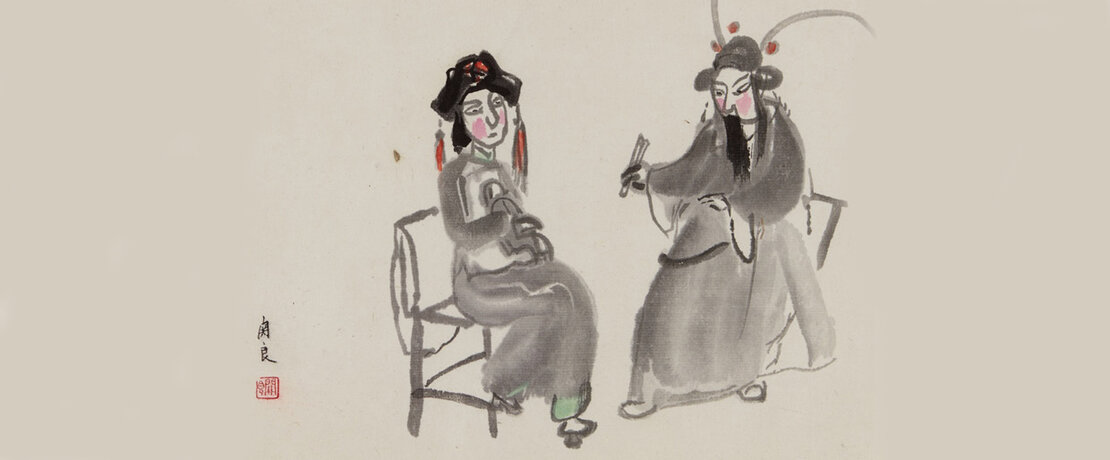Asian Art Sale - Surprise Results
With a very pleasing total result of 2.5 million euro, Lempertz’ two-day auction was a great success –the art from China in particular produced several surprise results. The number of Japanese artworks sold was also remarkably high.

China
Lempertz achieved a brilliant hammer price in its China auction. As lot 231 was called, a total of eight national and international telephones were already vying for a group of seven drawings by the mid-20th century Chinese artist Guan Liang (1900 – 1986). The ink depictions of figures and scenes from the Peking Opera were long and fiercely contested. Starting from a moderate estimate of € 4-5,000, a bidder from China eventually won the lot for € 228,000; the German provenance dating from the late 1950s certainly of significance (lot 231).
A further highlight of the Chinese art was a bronze Buddha Shakyamuni. The imposing calm and radiance impressed the bidders and led to a result of € 188,000, with which a German bidder prevailed against international competition (lot 109, € 100/150,000).
A fantastic result was seen for two Qing dynasty famille rose porcelain tiles decorated with the Eight Immortals in the Western Paradise. Alone ten national and international telephone lines fought for the lot, which had been acquired from Lempertz in the 1950s. The bidders eventually conceded defeat at € 75,000 to a Chinese buyer resident in Germany (lot 409, € 2/4,000). A 72.5 cm high blanc de chine Guanyin figure from the 19th century rose to € 60,000 (lot 179, € 25/30,000), whilst a fine and impressively large red lacquer lidded box from the Qianlong period ascended to € 34,000 (lot 138, € 10/15,000).
Shining amongst the Indian art was an almost 50 cm high bronze Shri Devi from Southern India. Made in the 15th/16th century, the sculpture was keenly fought over and sold to a French bidder who pushed the price from its € 4/6,000 estimate up to € 43,000 (lot 12).
The second auction day dedicated to Japanese art
A 64 cm high wood figure of Kobo Daishi from the Heian-/kamakura period or later was taken on by the German trade for € 17,500 (lot 500, € 15,000). In keeping with Lempertz’ jubilee, a range of armour and sword decoration was offered for sale, with a German collector winning three suits of armour from the 18th and 18th centuries for prices between € 10,000 and € 15,000 (lots 634-636). The sword guards (tsuba) in particular saw their biggest success in decades – consigned from three private collections from Italy, Belgium and Germany, the majority achieved amazing results (lots 624 – 755).
The highlights of the selection of 150 netsuke consigned from a number of European private collections included an ivory reclining ox from the late 18th century and signed by Masanao, which went to a German collector for € 25,000 (lot 867, € 20,000), and a large ivory netsuke, also in the form of an ox, from the late 18th century and inscribed Tomotada, which has now joined a German collection for € 20,000 (lot 866, € 16,000).
